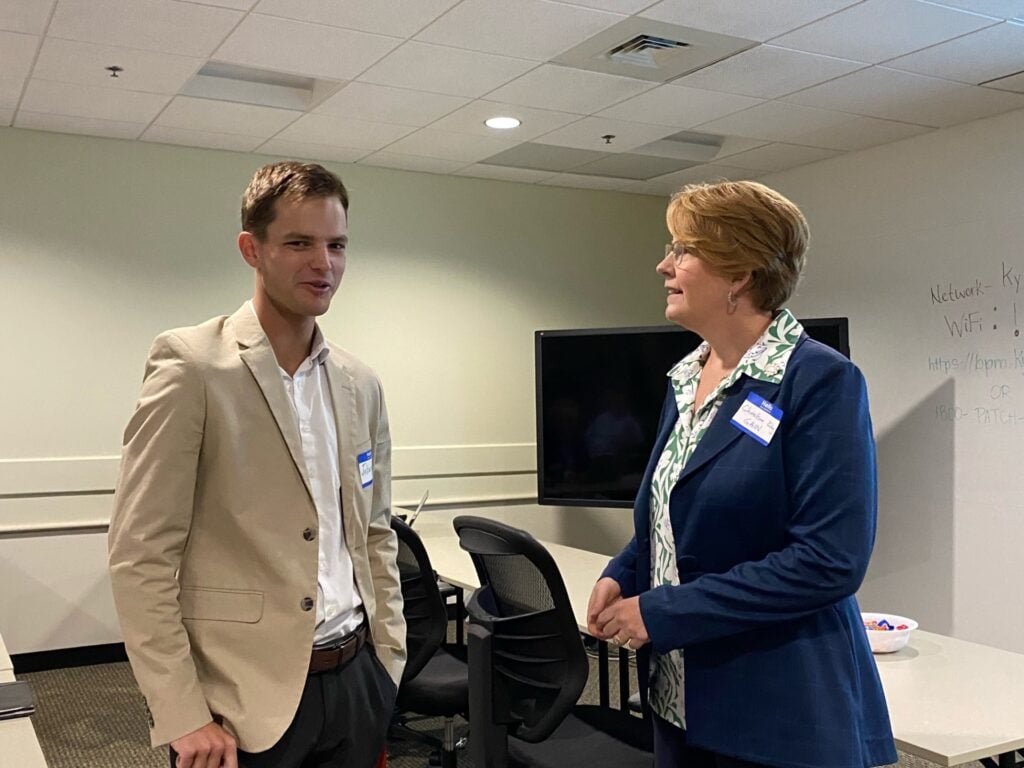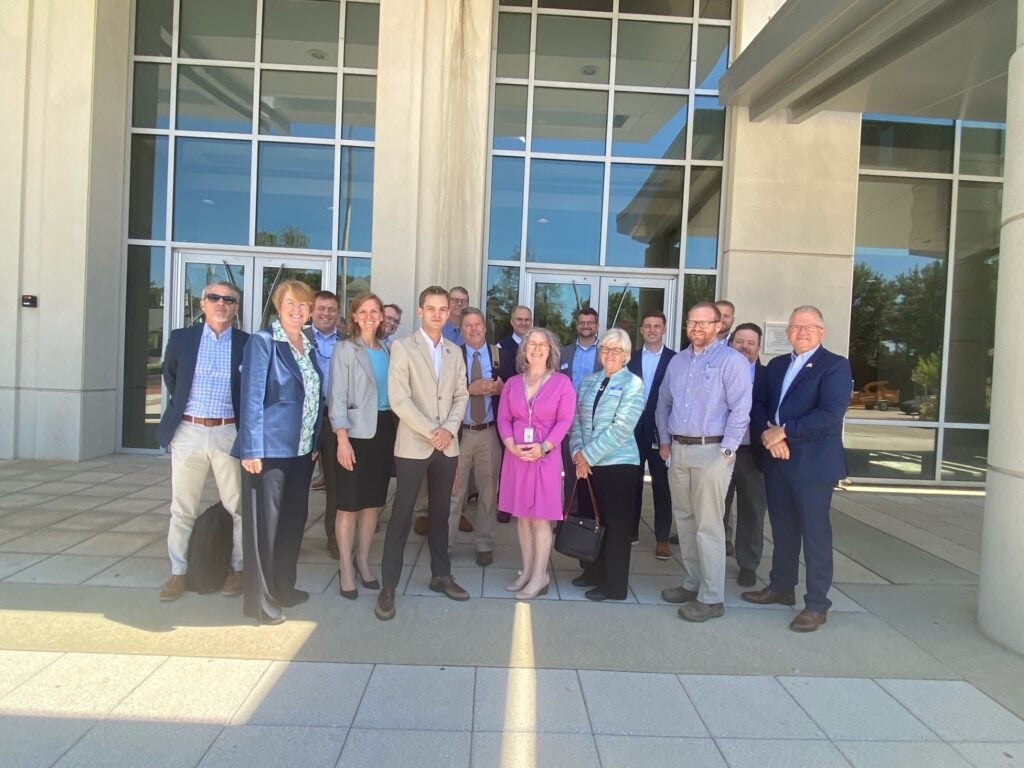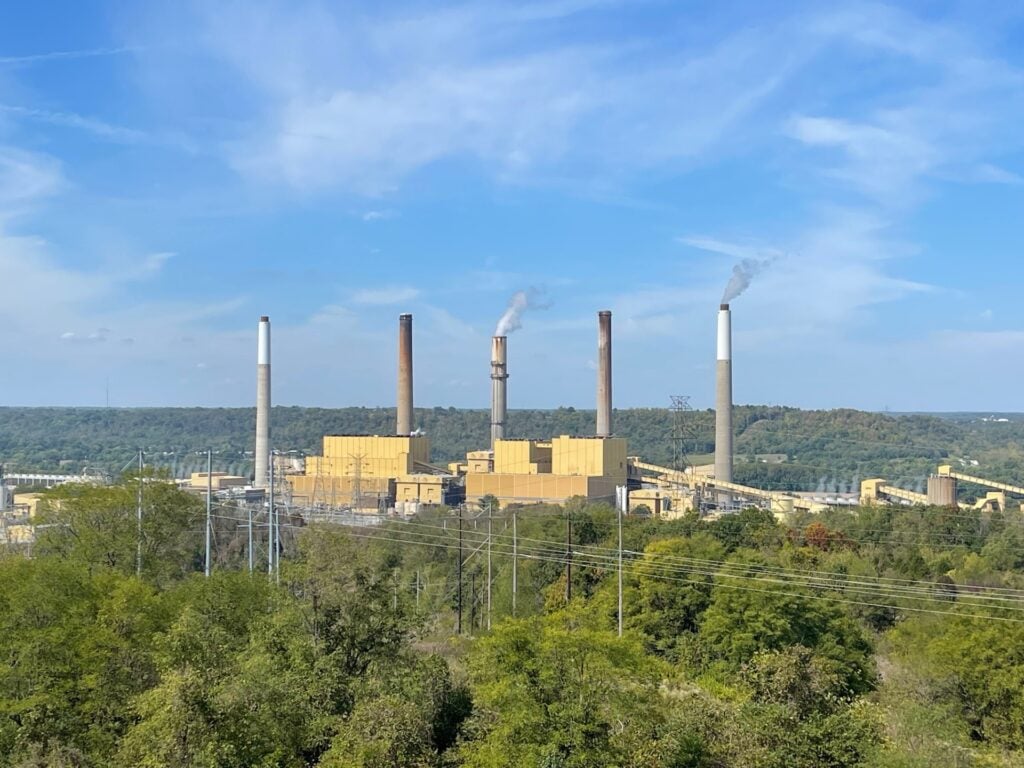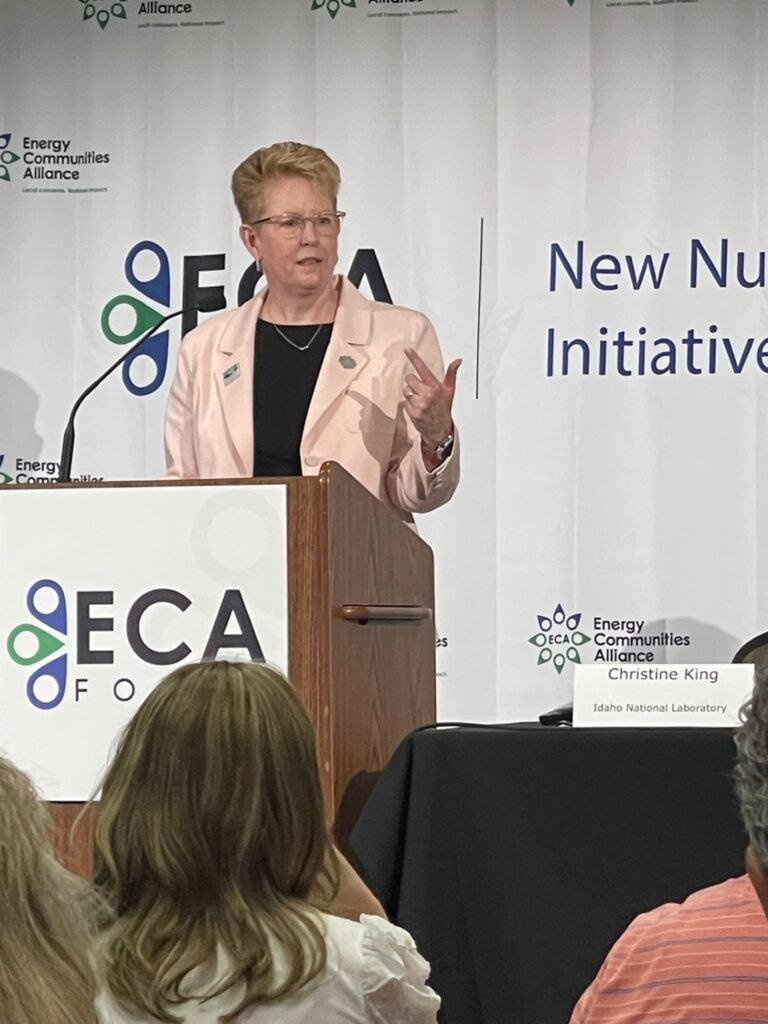
Latest News
GAIN helped Kentucky clear the runway for nuclear energy. Now the coal-dependent state is waiting for the plane to land
By Donna Kemp Spangler
Kenya Stump, an executive with the Kentucky Energy and Environment Cabinet for over 17 years, has seen the volatility of coal as an energy source: shrinking demand, plant closures, job losses and tougher pollution controls.
Utilities have responded to that pressure by relying more on natural gas plants because they are cheaper and cleaner than coal. Kentucky is also home to other energy-intensive manufacturing processes and a growing commercial sector.
“We don’t want to be left with gas as our only baseload resource,” Stump said. “Therefore, we are driven to look to nuclear if we are forced to move away from coal.”
Stump, executive director of Kentucky’s Office of Energy Policy since 2020, is a cheerleader for diversified energy sources like coal, natural gas, wind, hydroelectric and solar. But what was missing in Kentucky’s “all of the above portfolio”? Nuclear energy.
“It was glaringly obvious that the only nuclear energy that we had really came from TVA,” Stump said.
Tennessee Valley Authority, which supplies power to south central and western Kentucky, generates most of its electricity from hydroelectric dams. It also has three nuclear plants, one in Alabama and two in Tennessee.
“So even though we are ‘all of the above,’ we are actually not implementing ‘all of the above,’” said Stump. “We value baseload clean power options in our ‘all of the above’ strategy.”
In 2021, Julian Colvin, at that time a nuclear engineering student at North Carolina State University, began aggressively lobbying Kentucky lawmakers and energy policymakers to embrace advanced nuclear technology. That led to a partnership between Kentucky’s Energy Office and the U.S. Department of Energy’s Gateway for Accelerated Innovation in Nuclear (GAIN), based at Idaho National Laboratory (INL).

GAIN co-hosted a series of webinars with utilities, culminating in a June 2022 workshop in Kentucky’s capital of Frankfort. Utility executives, state government leaders, elected officials and environmental non-profits decided the time was right to pursue nuclear energy.
“Out of that, our stakeholders said, ‘We need to fly our flag, and let the world know Kentucky wants to do something with nuclear,’” Stump said.
In the past two years, Kentucky has come a long way. The state’s largest utilities are looking at siting an advanced nuclear reactor at one of their existing power plants.
“We’ve cleared the runway,” Stump said. “Now all we have to do is land the plane.”

Kentucky’s bipartisan support
Kentucky has taken steps toward nuclear power since 2017 when state Sen. Danny Carroll sponsored legislation to remove a state moratorium that had blocked construction of new nuclear power plants.
Six years later, Carroll won unanimous passage of a joint resolution that created a nuclear energy development working group in the state.
“Over recent years, we have seen the interest in nuclear energy explode, not just throughout this country, but throughout the world,” Carroll told National Public Radio’s WKMS. “We decided to form a working group to get us where we needed to go, to study the issues on the technology that would be acceptable for our commonwealth and not just looking at the idea of bringing nuclear energy to the commonwealth — but also focusing on the nuclear industry.
“That’s when the party really got started,” Stump said.

Stump’s Office of Energy Policy led the working group, which explored the entire ecosystem of nuclear energy in the state. “We looked at the whole spectrum, from steel production to waste management and, of course, in between reactor siting,” Stump said.
On Nov. 17, 2023, the working group submitted its report to the Kentucky Legislative Research Commission with its findings of “no insurmountable barriers” to develop a nuclear hub from providing power and heat to fuel production and waste management.
This led to legislative bipartisan support for the creation of the Kentucky Nuclear Energy Development Authority, which is attached to the University of Kentucky’s Center for Applied Energy Research (CAER) and governed by a 30-member advisory board with members representing various stakeholder groups.
Carroll said the legislation lays a strong foundation to recruit nuclear reactor developers and nurture a nuclear ecosystem that will bring other business and industry to Kentucky.
Kentucky’s largest utility

Rodney Andrews, director of the University of Kentucky’s CAER, chairs the Kentucky Nuclear Energy Development Authority. He said the authority’s intent is to promote development of nuclear energy from all aspects.
“Kentucky is a big manufacturer of steel, aluminum and stainless steel that requires large amounts of power,” he said. And advanced nuclear could be one solution to cleaner energy in the state’s industrial hubs.
The Ghent Station is a four-unit, coal-fired power plant located within five miles of several industrial companies, including North American Stainless and Nucor Steel, which consume large amounts of power. DOW Chemical is in nearby Louisville.
As PPL Corporation’s Kentucky utilities — Louisville Gas and Electric and Kentucky Utilities — consider the future of their coal-generating units, they turned to GAIN, whose experts assisted PPL in a feasibility study. The study published in March found that the Ghent site is suitable for a small modular reactor plant, but not larger conventional reactors. The company recently announced it will pursue a Phase 2 study. The goal: explore alternative locations and industrial partnerships that can enable energy-intensive manufacturing and data centers to achieve zero-carbon objectives while maintaining reliability and affordability.
“We understand that achieving our goal of net-zero carbon emissions will be challenging,” said PPL President and CEO Vincent Sorgi. “We continue to pursue an all-of-the-above technology strategy to replace aging generation with a cleaner, more diverse energy mix.”
That announcement drew enthusiasm from many.
“PPL went through a technology assessment and site feasibility study, and they settled on a developer. Now they’re entering this next phase to see what it actually looks like to do this. I think it’s very exciting,” said Stump.
Andrews agreed. “I think it’s an important step we have utilities that are receptive, as well as our large manufacturers,” he said.
He said GAIN was a valuable resource to getting the state on the nuclear energy path.
“After the legislature said they wanted this done, GAIN played an active role in sharing a lot of knowledge on what other states are doing and how it could be done,” Andrews said.
Community consent
Many states have turned to GAIN as a resource to guide them through technical and regulatory steps for potential nuclear deployment. In many coal-dependent communities, the loss of a major employer can be devastating.
Take Eastern Kentucky’s Appalachian Region.
“Kentucky has always been known as a coal powerhouse, historically,” said Colby Hall, executive director of the nonprofit Shaping Our Appalachian Region. “Coal mining goes up and down a bit, but it’s a shell of its former self.”
The nonprofit was founded 10 years ago to reverse population loss due to out-of-work coal miners and provide economic opportunities to 54 eastern Kentucky counties – 36 of which are considered distressed.
Stump and GAIN Director Christine King encouraged Hall to apply for a Department of Energy (DOE) Communities Local Energy Action Program (C-LEAP) grant.
“Kentucky has lost 15,000 jobs over the past 10 years associated with coal plant closures. From an energy and environmental justice perspective, they are labeled as disadvantaged, but the truth is that these communities are under-supported and under-resourced,” King said.
“We need jobs,” added Hall. “We need opportunities and things that play to our region’s strengths. We’ve always been an energy-producing part of the country, so we should at least take a look at nuclear to replace lost coal jobs.”
Eastern Kentucky won a one-year technical assistance grant. The area is one of five communities receiving technical expertise from GAIN as part of C-LEAP awarded projects.
Hall welcomes the help.
“Obviously it’s going to be a roadmap,” he said. “We are going to take the recommendations seriously, and I can’t think of a better national expert on nuclear energy than GAIN and Idaho National Laboratory, so we’re going to trust their research. Whether it’s workforce related or site development, we’re going to put those recommendations in motion.”
Kentucky’s nuclear interest
Kentucky has a long history of nuclear energy with the Paducah Gaseous Diffusion Plant, a facility that produced enriched uranium from 1952 to 2013. DOE owned the site, producing low-enriched uranium as feedstock for military reactors and weapons, and later for commercial nuclear fuel.
Since 1988, DOE has taken steps to clean up soil and ground water contamination at the site.
In June 2023, DOE awarded the Paducah Area Chamber of Commerce a $2 million grant to lead a study for the reindustrialization of the site.
“This study is developing a roadmap for the future of the site by looking at land transfers, infrastructure and workforce needs, and economic development,” said Sandra Wilson, president and chief executive officer of the Paducah Area Chamber of Commerce.
The former Paducah Gaseous Diffusion Plant covers roughly 3,600 acres with about 2,800 acres to be considered for potential development or other uses. The first request for a land transfer was submitted to DOE in May by the Paducah-McCracken County Industrial Development Authority.
“Our local governments and agencies passed formal resolutions earlier this year to send the message this community is a nuclear-ready community,” said Wilson. “We are ready and open to the nuclear industry.”
Kentucky’s secret sauce
GAIN has connected many nuclear-curious states to Energy Communities Alliance (ECA), a nonprofit organization of local governments impacted by DOE activities. ECA has hosted numerous forums aimed at bringing together policy makers and others to share information about environmental, regulatory and economic development needs.
Stump participated in the 2022 forum in Salt Lake City. That forum prompted her to have conversations with Carroll to establish a nuclear working group that led to the state’s comprehensive nuclear feasibility report. In 2023, Kentucky hosted an ECA forum in Paducah, inviting the community to talk about revitalizing the site for a nuclear-related enterprise.

GAIN has connected many nuclear-curious states to Energy Communities Alliance (ECA), a nonprofit organization of local governments impacted by DOE activities. ECA has hosted numerous forums aimed at bringing together policy makers and others to share information about environmental, regulatory and economic development needs.
Stump participated in the 2022 forum in Salt Lake City. That forum prompted her to have conversations with Carroll to establish a nuclear working group that led to the state’s comprehensive nuclear feasibility report. In 2023, Kentucky hosted an ECA forum in Paducah, inviting the community to talk about revitalizing the site for a nuclear-related enterprise.
Kara Colton, ECA’s director of nuclear policy, was impressed by Kentucky state leadership’s “wholistic approach” to nuclear energy opportunities.
“Kentucky had the foresight to understand that coal plants were going away, and they needed to look to the future on how to replace a major economic driver in their community. It was recognized by everyone in the state. There was alignment from the get-go,” she said.
At public hearings, people were engaged, Colton added. In Paducah, people expressed a strong interest in preserving their history. Some people’s interest in nuclear is driven by its clean energy benefits and others by economic opportunities, she added. “I can’t think of any voice left off. The folks in Kentucky are proud to be an energy state.”
Stump is pleased with the progress.
“From 2022 to now you can tick off several things: the working group, passage of legislation (Nuclear Development Authority), (and) you’ve got technical assistance going to East Kentucky. We have a feasibility assessment of a potential site. I mean, that’s a tremendous amount of work that happened in really two years.”
What’s left is “landing the plane,” she said. Then Kentucky will be a bonafide “all of the above” energy producing state.
About Gateway for Accelerated Innovation in Nuclear (GAIN)
The U.S. Department of Energy’s Office of Nuclear Energy established GAIN to provide the nuclear community with access to the technical, regulatory, and financial support necessary to move innovative nuclear energy technologies toward commercialization while ensuring the continued safe, reliable, and economic operation of the existing nuclear fleet. For more information, visit https://gain.inl.gov. Follow us on social media: Twitter, Facebook, Instagram and LinkedIn.
About Idaho National Laboratory
Battelle Energy Alliance manages INL for the U.S. Department of Energy’s Office of Nuclear Energy. INL is the nation’s center for nuclear energy research and development, celebrating 75 years of scientific innovations in 2024. The laboratory performs research in each of DOE’s strategic goal areas: energy, national security, science and the environment. For more information, visit www.inl.gov. Follow us on social media: Facebook, Instagram, LinkedIn and X.
